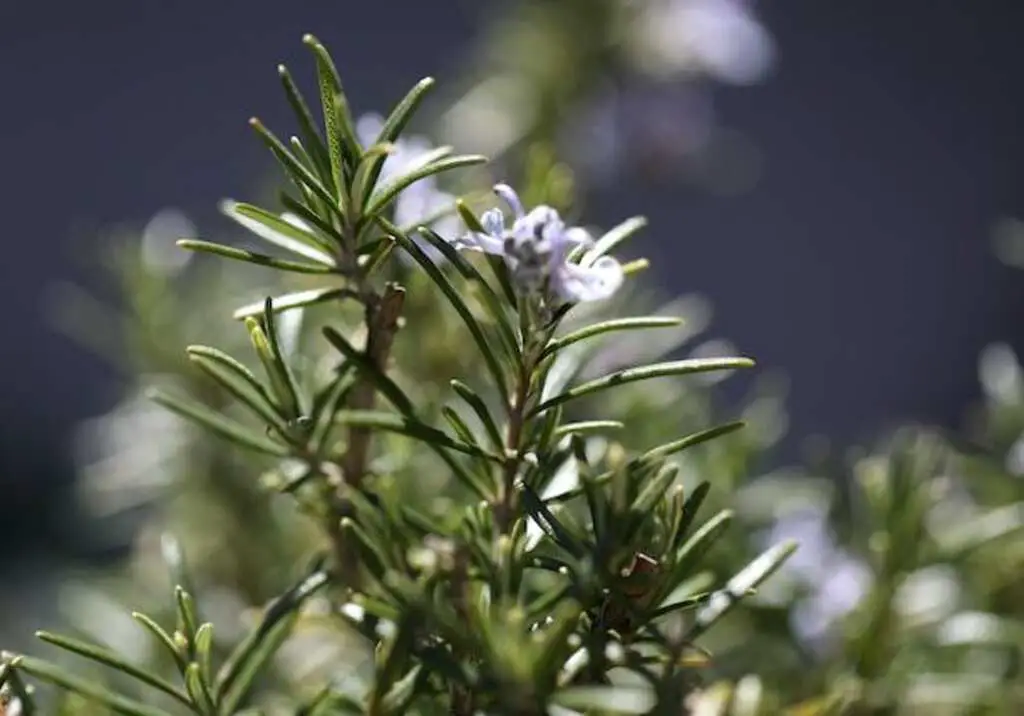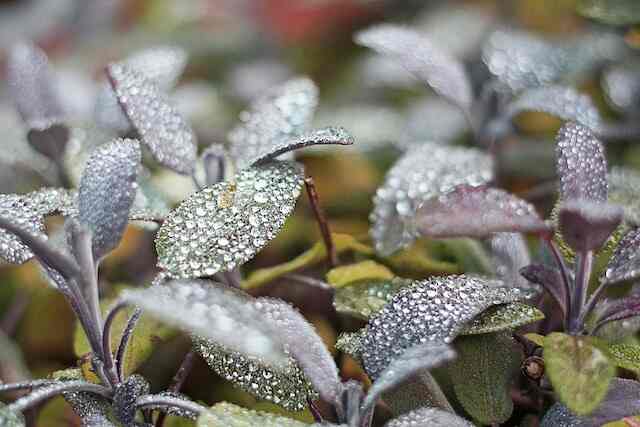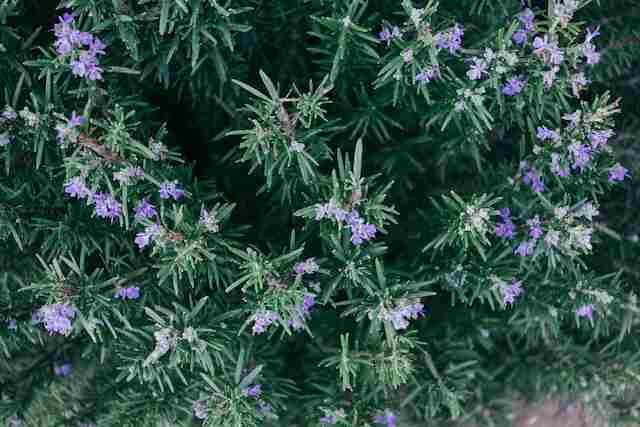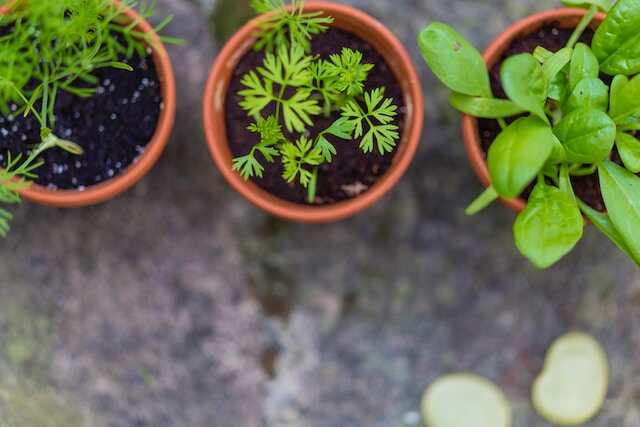How to Trim Your Herbs to Keep Them Growing?
Ready to become the ultimate herb whisperer? Knowing how to trim your herbs to keep them growing is the secret to keeping a never-ending supply of fresh, fragrant greens at your fingertips.
In this article, we’ll reveal the short answer to this herb-tastic mystery, along with some witty anecdotes and reasons why you should keep reading. Let’s dive in!
Table of Contents
- 1 How to Trim Your Herbs to Keep Them Growing
- 1.1 What are Herbs and why Trimming is Necessary
- 1.2 Different Types of Herbs and their Trimming Requirements
- 1.3 The Benefits of Trimming Your Herbs
- 1.4 Tools You Need to Trim Your Herbs
- 1.5 How to Trim Your Herbs
- 1.6 How often should you trim your herbs?
- 1.7 Tips to Keep Your Herbs Growing After Trimming
- 1.8 How Trimming Affects the Growth of Your Herbs
- 1.9 Troubleshooting Common Problems When Trimming Your Herbs
- 1.10 Conclusion – Trimming Your Herbs for Maximum Benefits
- 2 FAQs: How To Trim Herbs To Keep Them Growing?
- 3 Author
How to Trim Your Herbs to Keep Them Growing
What are Herbs and why Trimming is Necessary
Herbs are plants with fragrant leaves that are used for medicinal, culinary, and decorative purposes. Trimming herbs is an important part of growing them, as it encourages new growth, shapes the plant, and helps keep it healthy.
Regular trimming can also help to keep your herbs producing more leaves for longer, resulting in a larger harvest. In this blog post, we’ll cover the basics of what herbs are, why trimming them is important, and how you can go about doing it.
Different Types of Herbs and their Trimming Requirements
Herbs come in all shapes and sizes, and each type has its own trimming requirements. Herbs such as basil, oregano, and thyme can be trimmed in the same way, but other herbs like sage and rosemary require a different approach.
Basil should be trimmed in a way that encourages it to bush out. This can be done by pinching off the tops of the stems. Doing this will encourage the plant to produce more leaves, as well as keep it from getting too tall and leggy.
Oregano should be trimmed in a way that helps promote the growth of new shoots. This can be done by pinching off the tips of the stems, as well as removing any dead or damaged leaves.
Thyme should be trimmed to encourage new growth and to ensure the plant stays compact. This can be done by pinching off the tips of the stems and removing any dead or yellowed leaves.
Sage and rosemary should be trimmed in a way that encourages new growth. This can be done by pruning the stems and removing any dead or damaged leaves.
Different Types of Herb plants and their Trimming Requirements
| Herb Plant | Type of Growth | Trimming Requirements |
|---|---|---|
| Basil | Bushy | Pinch off flower buds to promote leaf growth. Trim back stems to maintain compact shape. |
| Cilantro | Tall | Pinch off the top of the stem to encourage bushier growth. |
| Thyme | Spreading | Cut back woody stems in spring to encourage new growth. Trim regularly to keep compact. |
| Rosemary | Woody | Cut back woody stems in spring to encourage new growth. Prune regularly to keep compact. |
| Mint | Spreading | Cut back stems to prevent overcrowding and promote new growth. |
| Sage | Woody | Trim back woody stems in spring to encourage new growth. Prune regularly to keep compact. |
It’s important to be careful not to cut too close to the base of the plant, as this can damage the roots.
The Benefits of Trimming Your Herbs
Trimming your herbs can be a great way to keep them healthy and growing. There are many benefits to trimming your herbs, including improved air circulation, more compact plants, and stronger roots.
Trimming helps to reduce disease and pest infestations, since pests and diseases prefer to hide in dense foliage. Trimming can also encourage more growth, as it helps to stimulate new growth.
Trimming your herbs can also help to improve the flavor and aroma of the herbs, as it helps to remove the old and dying leaves, which can lead to an off-taste.
Finally, trimming your herbs can help to create an attractive, neat appearance to your herb garden. With regular trimming, you can keep your herbs looking vibrant and full of life.
The Benefits of Trimming Your Herb Plants for Growth
| Benefit | Explanation |
|---|---|
| Promotes Healthy Growth | Trimming off dead or yellowing leaves redirects the plant’s energy towards healthy new growth. |
| Increases Leaf Production | Removing flower buds and trimming back stems can encourage the plant to produce more leaves. |
| Improves Flavor | Trimming off older leaves and stems can improve the flavor and quality of the remaining leaves. |
| Prevents Overgrowth | Regular trimming can prevent the herb plant from becoming too large and unwieldy, allowing it to grow more compactly and in a controlled manner. |
| Aids in Disease Prevention | Removing dead or diseased leaves and stems can help prevent the spread of disease to the rest of the plant. |
Tools You Need to Trim Your Herbs
Trimming your herbs can be a great way to keep them healthy and looking their best. But in order to get the job done right, you’ll need the right tools.
Depending on the type of herbs you have, you’ll need a few different items to properly trim them. For most herbs, you’ll need a pair of sharp pruning shears or scissors.
You may also want to invest in a pair of gardening gloves to protect your hands from the sharp edges of the herbs.
If you’re looking to harvest herbs for cooking, you may also want to invest in a herb stripper that will help you quickly and easily strip the leaves from the stem.
Finally, if you’re clipping herbs for a bouquet, you’ll need a vase and floral tape to keep the stems together. With these simple tools, you’ll be able to trim your herbs quickly and efficiently.
| Tool | Description |
|---|---|
| Pruning Shears | Used to cut and shape small stems and branches |
| Hand Pruners | Used for cutting thicker stems and branches |
| Scissors | Useful for precise cutting of small leaves and stems |
| Hedge Shears | Great for shaping and trimming larger hedges |
| Garden Knife | Can be used to make clean cuts on tough stems |
| Loppers | Used for cutting thick branches that are hard to reach |
| Gardening Gloves | Protect your hands from thorns, prickles and dirt |
Having these tools on hand will make it easier for you to trim your herb plants and promote better growth. However, keep in mind that different plants have different needs, so make sure to do your research before pruning to avoid damaging the plant.
How to Trim Your Herbs
Trimming your herbs is an important part of keeping them healthy and growing. It is important to know how to trim your herbs properly in order to get the best results. Here are some tips on how to trim your herbs:
Start by removing any dead leaves or stems, as these can hinder the growth of the plant. You should also remove any flowers that are beginning to form, as this will encourage the plant to focus its energy on growing leaves instead.
Next, use sharp scissors or pruning shears to trim the leaves and stems back to the desired length. Make sure to cut the stems at a 45-degree angle to encourage new growth and prevent water from pooling on the stems.
When it comes to trimming the leaves, it’s best to cut the leaves from the top or bottom of the plant, rather than from the sides. This will help you maintain the shape of the plant and allow for new growth.
Finally, once you have trimmed your herbs, you should dispose of the trimmings in a compost bin or other designated area. This will help to prevent any diseases or pests from spreading to your herb garden.
How to Trim Your Herbs plants
| Herb | How to Trim | When to Trim |
|---|---|---|
| Basil | Pinch off the top leaves to encourage bushier growth. Remove any flower buds as soon as they appear. | Every 2-3 weeks or when the plant is about 6 inches tall. |
| Thyme | Trim off the top 1/3 of the plant, including the stems and leaves. | After the first growth flush in the spring, then once every month or two. |
| Rosemary | Pinch off the top 1/2 inch of new growth to encourage branching. Prune out any dead or damaged branches. | Once a year in the spring. |
| Mint | Pinch off the top leaves to encourage bushier growth. Remove any flower buds as soon as they appear. | Every 2-3 weeks or when the plant is about 6 inches tall. |
| Sage | Pinch off the top leaves to encourage bushier growth. Remove any flower buds as soon as they appear. | Every 2-3 weeks or when the plant is about 6 inches tall. |
How often should you trim your herbs?
Fresh herbs are a great addition to any kitchen, but knowing when and how to trim them can be a bit confusing. The general rule of thumb for trimming herbs is to do it regularly to promote growth and keep the plant healthy.
The frequency of trimming, however, may depend on the type of herb you have. For herbs like basil, parsley, and cilantro, it is best to trim them every few weeks or when they grow to a height of 6–8 inches.
This helps to encourage new growth and prevents the plant from becoming too leggy. On the other hand, herbs like thyme and oregano can be trimmed every 2–3 months, or when they become too woody.
When trimming your herbs, make sure to use sharp, clean scissors or gardening shears. Cut just above a pair of leaves to encourage branching and bushiness. Avoid cutting into the woody stems of the plant, as this can damage the herb and inhibit its growth.
By following these guidelines, you can ensure that your herbs stay healthy and productive, providing you with fresh, delicious flavor for all your culinary creations.
| Herb | How often to trim |
|---|---|
| Basil | Every 2-3 weeks or when the plant is about 6 inches tall. |
| Thyme | After the first growth flush in the spring, then once every month or two. |
| Rosemary | Once a year in the spring. |
| Mint | Every 2-3 weeks or when the plant is about 6 inches tall. |
| Sage | Every 2-3 weeks or when the plant is about 6 inches tall. |
Tips to Keep Your Herbs Growing After Trimming
Trimming your herbs is an important part of keeping them healthy, but it is also important to know how to keep them growing after trimming. Here are some tips to keep your herbs growing strong after trimming.
First, make sure to use sharp scissors or shears when trimming your herbs. This will ensure that you are not damaging the stems or leaves of the herbs.
Second, when trimming, be sure to leave some of the stems and leaves intact. This will help the herbs to continue to grow and thrive.
Third, after trimming, water your herbs well. This will help the herbs to recover from the trimming and will also help them to stay hydrated.
Fourth, when you are done trimming, be sure to clean up any debris that may have been trimmed off. This will help to prevent any disease or pests from taking hold in your garden.
Finally, try to avoid over-trimming your herbs. Trimming too much can damage the herbs and can even stunt their growth. Be sure to trim just enough to keep them healthy and growing.
By following these tips, you can ensure that your herbs will stay healthy and will continue to grow after trimming. With proper care and attention, your herb garden can thrive all season long.
Common Mistakes to Avoid When Trimming Your Herbs
When it comes to trimming your herbs, there are some common mistakes that you want to avoid in order to ensure your herbs continue to grow and thrive.
One of the most common mistakes is trimming too much of the stem. This can be a costly mistake as it can cause the herb to die or fail to produce new growth.
You want to be sure that you are only trimming off the necessary leaves and stems. Another mistake that people make is trimming too often.
It’s important to give your herbs adequate time to regrow and recover. If you trim too often, you could be causing them to become weak and unhealthy.
Lastly, you want to avoid trimming the flowers and buds of the herb. These are essential for the health and growth of the herb.
Trimming them off can limit the growth of the herb and prevent it from producing new leaves and stems.
By avoiding these common mistakes, you can ensure that your herbs remain healthy and continue to grow.
Here’s a table with some tips to keep your herbs growing after trimming:
| Tip | Description |
|---|---|
| Water regularly | Herbs need consistent moisture to grow well. Water them regularly, but be careful not to over-water as this can lead to root rot. |
| Provide adequate light | Most herbs require at least 6 hours of direct sunlight per day to thrive. If your herbs are indoors, place them near a south-facing window or use artificial grow lights. |
| Fertilize occasionally | Herbs benefit from regular feeding with a balanced fertilizer. Use a slow-release granular fertilizer or a liquid fertilizer diluted according to the instructions. |
| Prune regularly | Regular pruning helps keep herbs healthy and encourages bushy growth. Pinch back the tips of stems regularly to encourage branching and to prevent the plant from getting too leggy. |
| Monitor for pests and diseases | Keep an eye out for common herb pests like aphids, spider mites, and whiteflies. Also, watch for signs of disease such as wilting, yellowing leaves, or spots on the leaves. |
| Harvest regularly | Harvesting your herbs regularly encourages new growth and keeps the plant from becoming too woody. Cut back no more than 1/3 of the plant at a time. |
| Mulch around the base of the plant | Mulching helps to retain moisture and insulate the roots of the plant. Use a layer of organic mulch like shredded leaves or straw. |
| Repot when necessary | Herbs grown in containers may need to be repotted every year or two. If the plant becomes root-bound or the soil is depleted, it’s time to repot into a larger container. |
How Trimming Affects the Growth of Your Herbs
Trimming your herbs is essential for their growth and health. It is an important part of maintaining your herb garden and can help you get the most out of your herbs.
Trimming your herbs can help to promote new growth, encourage bushier plants, and even increase the flavor of the leaves.
By cutting off dead or dying leaves and stems, you are allowing more energy and nutrients to be directed towards the new, healthy growth.
This can help your herbs grow bushier and fuller, producing more flavorful leaves. Trimming off any leaves or stems that are diseased or damaged can also help to prevent the spread of disease to other parts of the plant.
Trimming your herbs can also help to increase the air circulation around the plants. This prevents the growth of fungus and mildew, which can cause your herbs to become unhealthy.
It also helps to reduce the amount of moisture on the leaves, which can help to prevent diseases such as powdery mildew.
Overall, trimming your herbs can help to keep them healthy and promote new growth. By cutting off old and dead leaves and stems, you are allowing more energy to be directed towards the healthy growth of the plant.
It can also help to improve the flavor of the leaves, as it encourages the growth of new and flavorful foliage.
Troubleshooting Common Problems When Trimming Your Herbs
Trimming herbs can be a tricky business, so it’s important to know how to troubleshoot common problems. If you’re having problems with the health of your herbs, it may be due to incorrect trimming.
If you’ve trimmed your herbs too severely or too often, it can cause them to become weak and unhealthy. Other common problems include pest infestations, disease, or not enough nutrients.
To troubleshoot these problems, it’s important to first identify what is causing the issue. After recognizing the issue, you can proceed to address it by implementing the required measures.
For example, if your herbs have been trimmed too often, give them a few weeks to recover before trimming again.
If your herbs are suffering from a pest infestation, then take steps to remove the pests and apply a pesticide to prevent further infestations.
If the problem is due to a lack of nutrients, then make sure to fertilize your herbs regularly. By troubleshooting common problems, you can keep your herbs healthy and growing strong.
Here’s a table outlining some common problems when trimming herb plants and potential solutions:
| Problem | Possible Causes | Solutions |
|---|---|---|
| Wilted or Droopy Leaves | Underwatering, Overwatering, or Shock | Check soil moisture and water accordingly, avoid overwatering. Give plants time to adjust to new environment before trimming. |
| Yellow or Brown Leaves | Nutrient Deficiency, Overwatering, Underwatering, or Age | Fertilize with appropriate nutrients, adjust watering schedule, consider plant age when trimming. |
| Slow or Stunted Growth | Lack of Sunlight, Nutrient Deficiency, or Overcrowding | Provide adequate sunlight, fertilize with appropriate nutrients, thin out overcrowded plants. |
| Leaf Curling or Wilting | Pests or Disease | Inspect plants for signs of pests or disease, treat with appropriate remedies. |
| Uneven Growth or Legginess | Uneven Light, Overcrowding, or Age | Rotate plants to ensure even light exposure, thin out overcrowded plants, consider plant age when trimming. |
| No New Growth | Over-trimming, Nutrient Deficiency, or Age | Avoid over-trimming, fertilize with appropriate nutrients, consider plant age when trimming. |
Remember that every herb plant is different and may require unique solutions to problems. Additionally, prevention is key – regular maintenance and care can help prevent many of these common problems from occurring in the first place.
Conclusion – Trimming Your Herbs for Maximum Benefits
Trimming your herbs can be a great way to keep them healthy and growing. By trimming your herbs regularly, you can ensure they are getting enough light, water, and nutrients to maintain their growth.
Trimming also helps reduce the spread of disease, as well as improve the flavor and quality of the herbs. The right tools and techniques are important for successful trimming, so make sure to do your research before getting started.
With the right knowledge and care, you can enjoy the full benefits of trimming your herbs and keep them growing for years to come.
FAQs: How To Trim Herbs To Keep Them Growing?
What is the best time of day to trim herbs?
The best time of day to trim herbs is in the morning, after the dew has dried but before the sun is at its highest point. This allows the plant to recover from the trimming before the heat of the day sets in.
How much of the herb should be trimmed?
Generally, no more than a third of the plant should be trimmed at one time. This allows the plant to recover quickly and continue growing. However, some herbs like basil can be trimmed down to just above the bottom two sets of leaves.
How often should herbs be trimmed?
Herbs should be trimmed regularly, but the frequency depends on the herb and its growth rate. Some herbs like basil can be trimmed every two weeks, while others like thyme and rosemary only need to be trimmed a few times a year.
Should I trim my herbs before or after they flower?
It’s best to trim herbs before they flower, as this encourages the plant to produce more foliage. Once herbs begin to flower, their energy is directed towards producing seeds instead of growing leaves, which can negatively affect the flavor and quality of the plant.
Can I use the trimmed herbs?
Yes, the trimmed herbs can be used in cooking or preserved for later use. In fact, trimming your herbs regularly can help to promote new growth and ensure a steady supply of fresh herbs for your kitchen.
Related Posts:












